Why do yellow spots appear on tomato leaves in a greenhouse and how to save your tomato crop
Gardeners often experience yellowing of tomato foliage. There are many reasons for this, it is important to correctly identify the source of the problems in order to preserve the plants. The stains can affect the crop, or even destroy it.
Why yellow spots appear on the leaves of tomatoes in the greenhouse, how to determine the cause and how you can eliminate it - you will learn all this from our article, supplemented with explanatory photographic materials.
The content of the article
Possible causes of yellowing leaves
Yellowing of the leaves is common both indoors and outdoors. Why do the stem and foliage of tomatoes turn yellow? Changes in the color of the tops can be caused by mistakes in maintenance, diseases or imbalance of substances in the soil.
When yellowness appears on the leaves, do not panic - it is important to quickly and correctly determine the source of the problem.
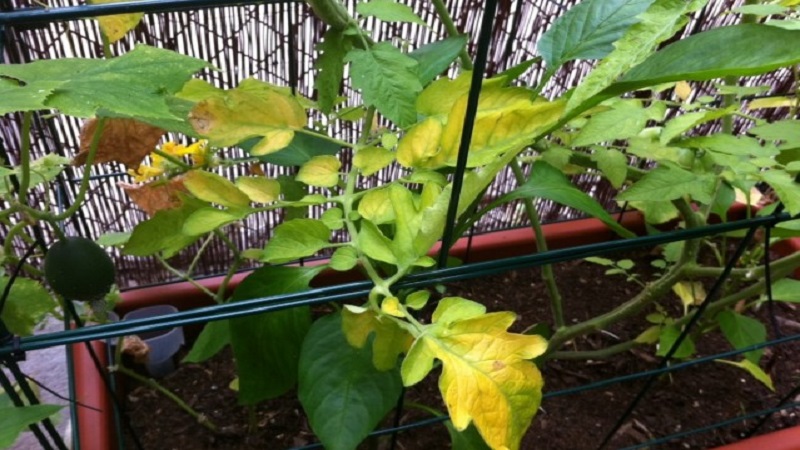
Lack of fertilizer
Lack of nutrients negatively affects the condition of plants. To correctly determine which substance is too little, you need to pay attention to which part of the plant yellowing began.
What happens when there is a deficiency of specific elements:
- Nitrogen. With a lack of tops, the leaves turn yellow or discolored. Young leaves grow small, and the plant itself weakens. Lack of nitrogen negatively affects the fruits.
- Phosphorus. The appearance of yellow spots on the lower leaves is also characteristic of phosphorus deficiency. The leaves become smaller, their edges curl up, the stem takes on a purple hue.
- Potassium. The lower leaves of the seedlings turn yellow, curl and die off, the stems become tough. Changes begin at the edges of the leaf plate, new leaves grow small and thick.
- Zinc. In addition to yellow spots, brown and gray blotches appear on the foliage. Over time, the leaves die off.
- Magnesium. The foliage color changes to yellow between the veins. New leaves roll inward, and old ones become covered with brown spots and fall off.
- Bor. The upper leaves are covered with yellow spots, the veins turn brown. The plant grows in breadth and sheds flowers.
- Sulfur. First, the upper leaves turn yellow, then the changes affect the lower branches. The tops become brittle and brittle.
- Iron. Yellow spots appear in the middle of the leaf blade and along the veins.
- Manganese. Yellowness appears in the middle of the leaf, near the veins the color of the spots is heterogeneous, yellow-green.
- Molybdenum. The first pair of true leaves turns yellow, they curl upward. The color change begins with the appearance of small yellowish specks, then covering the entire surface of the plate. The veins of the foliage remain green.
Root damage
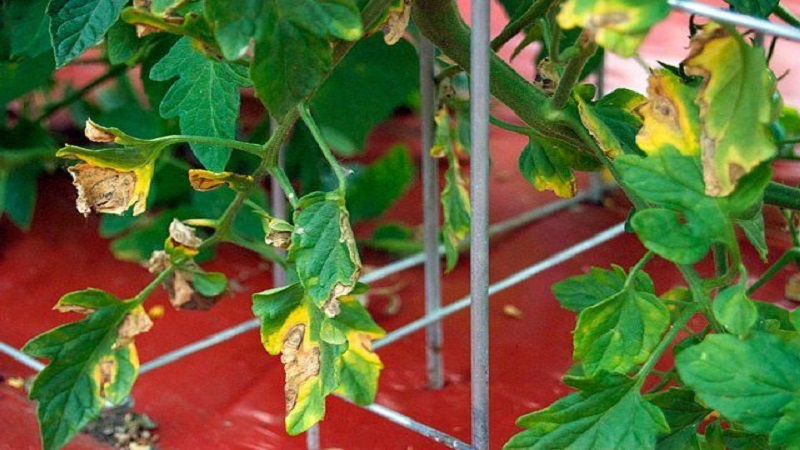
The root system is responsible for feeding the entire plant. Damage to it negatively affects foliage.
A change in the color of the tops can be caused by a depressed state of the roots, which occurs for various reasons:
- damage pests;
- weakening due to excess vegetative mass;
- transplant injuries;
- deep loosening of the soil;
- poor quality seedlings.
Most often, yellowing of foliage is caused by a weakening of the root system, which cannot cope with the nutrition of the tops. The result is starvation and leaf death. The change in the color of the tops starts from the bottom of the plant.
Important! The problem will be solved by itself as soon as the damaged roots grow back. An exception is the beginning of the decay process, in this case, fungicide treatment will be required.
Often the reason for insufficient development of the root system is poor-quality or improperly prepared seedlings. The plant was grown in small containers, which constrained the roots. Such plants have abundant green mass, elongated upward. They often get sick after the transplant.
Sunburn

Lighting plays an important role in the growth of seedlings. Excessive sunlight can burn the foliage and cause it to turn yellow. This usually occurs during a period when the plants are weakened after planting in the garden.
The tops may turn yellow due to a lack of light. Thickening of the plantings leads to the fact that the plants receive less lighting. As a result, the lower and middle leaves begin to change their color and fall off.
Excess moisture
Moisture deficiency, like excess moisture, negatively affects the health of tomatoes. With insufficient watering plants begin to save moisture, trying to reduce its evaporation. In this case, leaves are rejected.
With a moisture deficit, the leaves first curl up, then their color changes and falls off.
With abundant watering, the plant forms an excess green mass, with which the roots cannot cope with nutrition. This leads to insufficient development of the root system and poor absorption of nutrients from the soil. The yellowing of foliage with excess moisture occurs due to a lack of nitrogen.
Plants grown in a greenhouse or greenhouse can turn yellow due to high humidity. The optimum moisture level is 60-70%, with an increase in the indicator, the tops begin to rot. The situation can be aggravated by low air temperatures.
Pests
Insects can also cause yellowing and death of tomato leaves:
Possible diseases
Yellow foliage is the first symptom of many diseases.
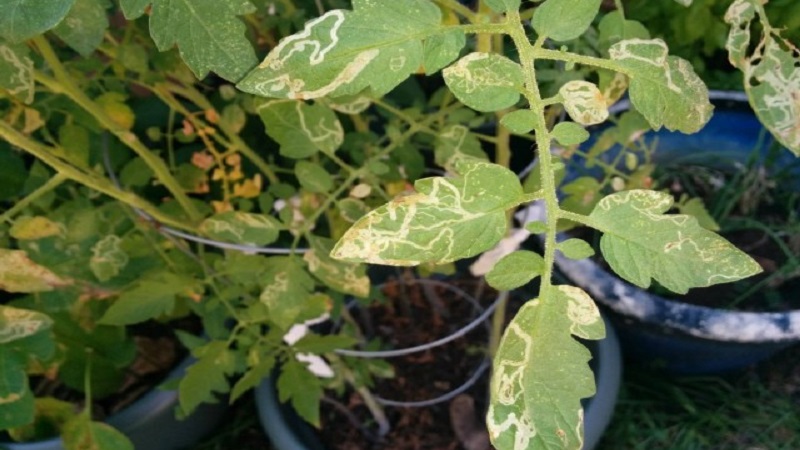
Diseases causing yellowing of the tops:
- Chloratic curl- the plant droops and looks weakened, the leaves turn yellow, and the roots rot.
- Cladospirosis- a dark bloom appears on the bottom of the bush, which turns yellow over time. The spots spread throughout the plant, the damaged areas die off.
- Septoriasis - the lower old leaves are affected first. A small speck appears on the plate, which gradually grows, acquiring a dark outline. The leaves dry up, the stem turns yellow, the plant dies.
- Mosaic - the leaf acquires a non-uniform yellow-green color, deformation of leaves and fruits occurs, and then their necrosis.
- Powdery mildew- small yellow spots and white bloom appear on the leaves. With the course of the disease, the formations become covered with a moist substance, the fruits crack and rot, the flowers turn black and fall off.
- Gray rot - the stem is covered with gray-brown spots, light stripes appear on it, the leaves turn yellow.
- Late blight - a white bloom appears on the underside of the leaf, then brown oval spots form on the damaged areas, which then pass to the stem. In this case, the fruits turn black.
- Brown spot - yellow spots appear on top of the leaf plate, and brown ones below. The disease develops from the lower branches, gradually affecting the entire tops.
- Alternaria - the leaves turn yellow, black specks appear on them, tissue necrosis and leaf dieback occur. Blackened patches form on the fruit.
Yellowing of leaves on seedlings
Leaves of young plants can start to turn yellow for natural reasons. Transplanting seedlings from pots to a garden bed is stress for plants. Yellowness on the leaves indicates the adaptation of tomatoes to new conditions. This is due to a temporary interruption in the supply of nutrients from the root system to the tops. To maintain vitality, the plant rejects the lower leaves.
If the problem is due to the stress of the planting, the color changes will only affect the lower leaves. After a few days, the leaves should fall off, if this has not happened, they are removed manually.
Other reasons for yellowing seedlings:
- small container;
- watering errors;
- hypothermia;
- nitrogen deficiency;
- insufficient lighting;
- acidity of the soil.
Important! Solanaceous plants die off of the lower leaves. If the yellow spots have not started to spread throughout the plant, there is no cause for concern.
Control methods
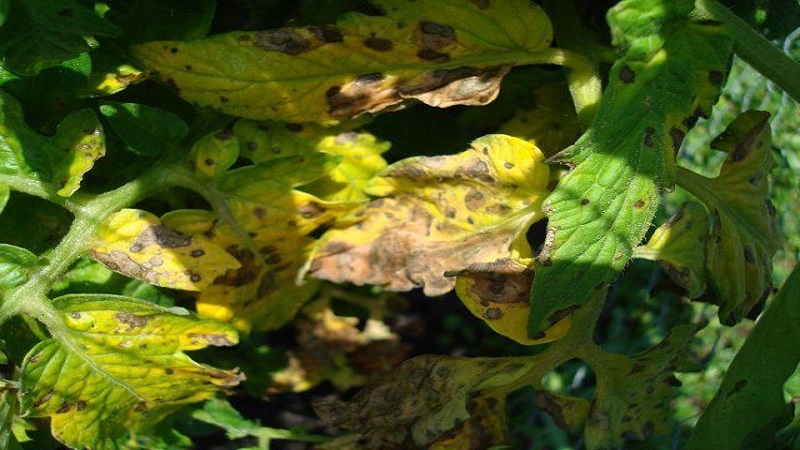
What to do if stains appear on tomatoes? Since there are many problems that cause yellowing of tomato foliage, it is important to correctly identify the source of the problem and eliminate it. If the tops have turned yellow due to illness, do not let things go by themselves. Diseases are treated with chemicals and folk remedies.
Chemical and biological agents
Fungicides are effective against most tomato diseases.
The following drugs are used in treatment:
- Abiga Peak;
- "Barrier";
- "Ordan";
- "Bravo";
- Thanos;
- "Ditan";
- "Revus";
- "Quadris";
- "Consento";
- Fitosporin;
- Fundazol;
- copper sulfate;
- bordeaux liquid.
Insecticides are used in pest control:
- Iskra M2;
- "Confidor Extra";
- "Decis Profi".
Strengthens the root system with growth stimulants:
- "Epin";
- "Heteroauxin";
- Lariksin;
- Novosil;
- Kornevin.
Elimination of soil imbalance
As soon as it became clear which element was missing in the soil, it was necessary to feed it with special additives:
- Phosphorus. The deficiency is eliminated with the help of "Superphosphate" - 15 g per 10 liters of water, the dosage is designed for processing 1 sq. m.
- Magnesium. Foliar treatments are carried out with magnesium nitrate - 5 g per 10 l of water.
- Potassium. Potassium sulfate is used - 8-10 g per 10 liters of water. Processing is carried out 1 time in 4-5 days, after 3 procedures, a solution of the drug should be added to the soil - 15 g per 1 sq. m.
- Boron deficiency replenish by spraying with 1% boric acid solution. The procedure is carried out in the evening.
- Iron. The bushes are sprayed with a 1% solution of copper sulfate or iron chelate. These products are suitable for foliar applications.
- Manganese. Seedlings are sprinkled with 1% potassium permanganate solution.
- Molybdenum. Plants should be treated with a solution of ammonium molybdate - 2 g per 10 liters of water.
Traditional methods
You can restore the nitrogen balance using urea - 1 tbsp. l. preparation for 10 liters of water. The dosage is calculated for 1 sq. m. Foliar treatments are also effective - 1 tsp. 10 liters of water. During the procedure, the ground part of the plant is sprayed.
Organic fertilizers are also used to saturate the soil with nitrogen:
- mullein - 1 liter of fertilizer per 10 liter bucket of water;
- bird droppings - 500 g per 10 liters of water;
- wood ash or soot - 250 g per 10 liters of water.
Important! Poultry manure can be combined with wood ash to increase efficiency.
Agrotechnical techniques
In case of excessive moisture, it is necessary to stop watering for several days. To restore the balance - add urea to the soil - 1 tsp. solution for 1 sq. m.
In order to prevent burns of the plants, an additional awning or canopy is installed for several weeks after planting them on the garden bed. As soon as the seedlings take root, the shelter can be removed.
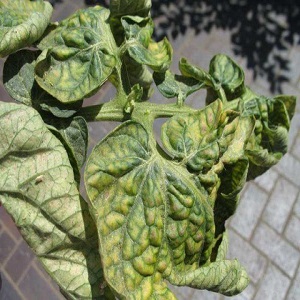
When planting seedlings, keep a distance to avoid thickening. The distance between the plants should be 70 cm.
If the leaves on the tomatoes began to turn yellow due to lack of light, they cannot be transplanted. It is better to thin out the tops by removing the leaves that shade each other.
The restoration of the root system takes a long time. During this period, it is important to provide the plant with adequate nutrition and watering.
It is possible to restore the balance of useful microelements with the help of additional feeding "nitroammofoskoy" - 1 tsp. preparation for 10 liters of water. Processing is carried out 1 time in 3-4 days in the evening until the yellowing of the leaves stops.
Preventive measures
Determining the cause of tomato yellowing is not easy. It is much easier to follow simple measures that will keep the seedlings healthy:
- observe moderation in watering;
- maintain optimal temperature and humidity levels;
- timely fertilize;
- monitor the condition of plants in order to recognize diseases in time;
- fight pests;
- make up for the lack of useful micronutrients;
- do not neglect preventive treatment with fungicides;
- follow the rules of crop rotation;
- regularly disinfect garden tools;
- process the soil and seed material before planting.
Experienced agronomist tips
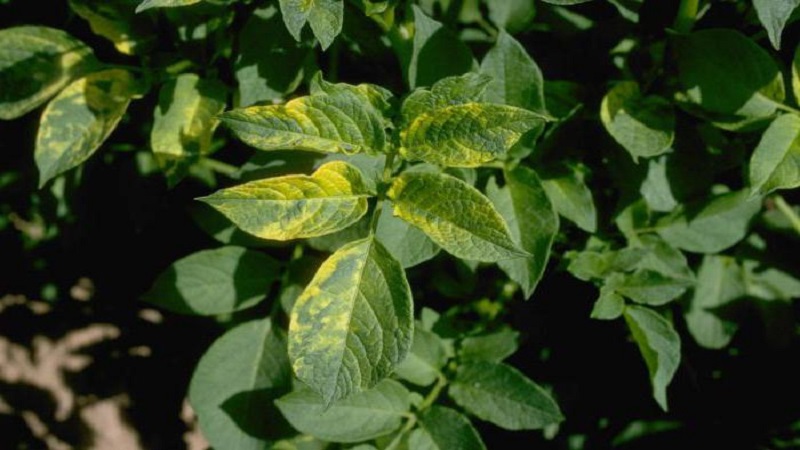
Experienced gardeners know several tricks that allow you to solve the problem of yellowed leaves at no cost:
- You can fill the phosphorus deficiency with the help of fish heads. They are buried in the area next to the tomato beds. With this method, soil saturation occurs slowly and for a long time.
- It is better to pick off yellow leaves rather than leave them on the bushes. Otherwise, plants will waste food on damaged areas.
- In order not to damage the bushes while cutting off the leaves, they must be lowered down, pressed against the stem, and then gently pulled up.
- To help young seedlings adapt, expose them to a sunny spot when the first shoots appear. When the air temperature rises to + 18 ° C, the pots with plants can be taken outside for hardening. Seedlings that grow on the windowsill must be turned over once every 7 days with the other side to the sun.
Conclusion
On tomato leaves, yellow spots can appear for many reasons: care errors, imbalance of useful elements in the soil, diseases and pests. To protect the crop, it is enough to follow simple preventive measures.
If the tops of the bushes have begun to turn yellow, it is important to correctly identify the source of the problem and eliminate it. Delay and waiting can lead to the death of all plants.